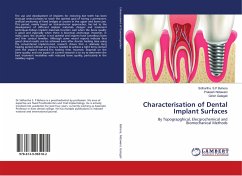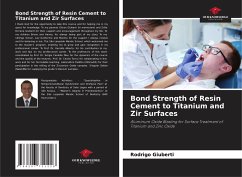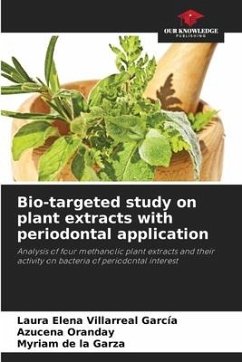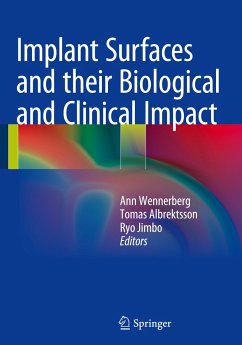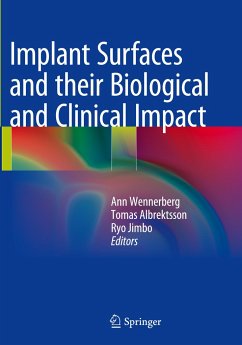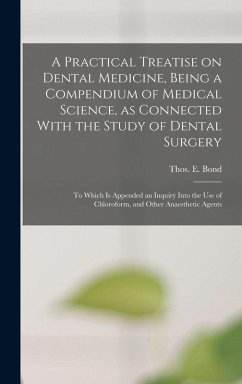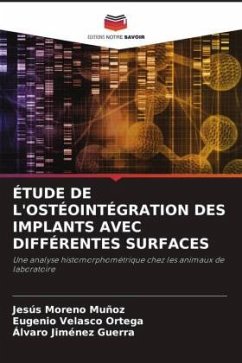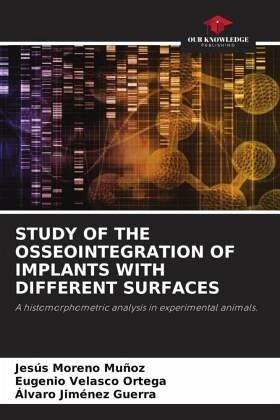
STUDY OF THE OSSEOINTEGRATION OF IMPLANTS WITH DIFFERENT SURFACES
A histomorphometric analysis in experimental animals.
Versandkostenfrei!
Versandfertig in 6-10 Tagen
40,99 €
inkl. MwSt.

PAYBACK Punkte
20 °P sammeln!
The osseointegration of dental implants depends largely on their morphology and surface. Surface treatments make it possible to generate roughness at the microscopic level, improving the bone-implant junction. Osseointegration is a complex sequence of biological events, such as cell proliferation, induction of genes related to bone maturation and organization, and finally the mineralization phase of the matrix.studies with animal models have made it possible to quantify the level of osseointegration in implants with a rough surface, as well as with parameters such as disinsertion torque. In th...
The osseointegration of dental implants depends largely on their morphology and surface. Surface treatments make it possible to generate roughness at the microscopic level, improving the bone-implant junction. Osseointegration is a complex sequence of biological events, such as cell proliferation, induction of genes related to bone maturation and organization, and finally the mineralization phase of the matrix.studies with animal models have made it possible to quantify the level of osseointegration in implants with a rough surface, as well as with parameters such as disinsertion torque. In this sense, the evaluation of the biological response of titanium implants in the bone tissue of experimental animals indicates that all rough surfaces osseointegrate favorably, demonstrating their biocompatibility and that the host tissues respond adequately to the insertion of the implants; in this sense, sandblasted surfaces treated with alumina usually present high osseointegration values.




